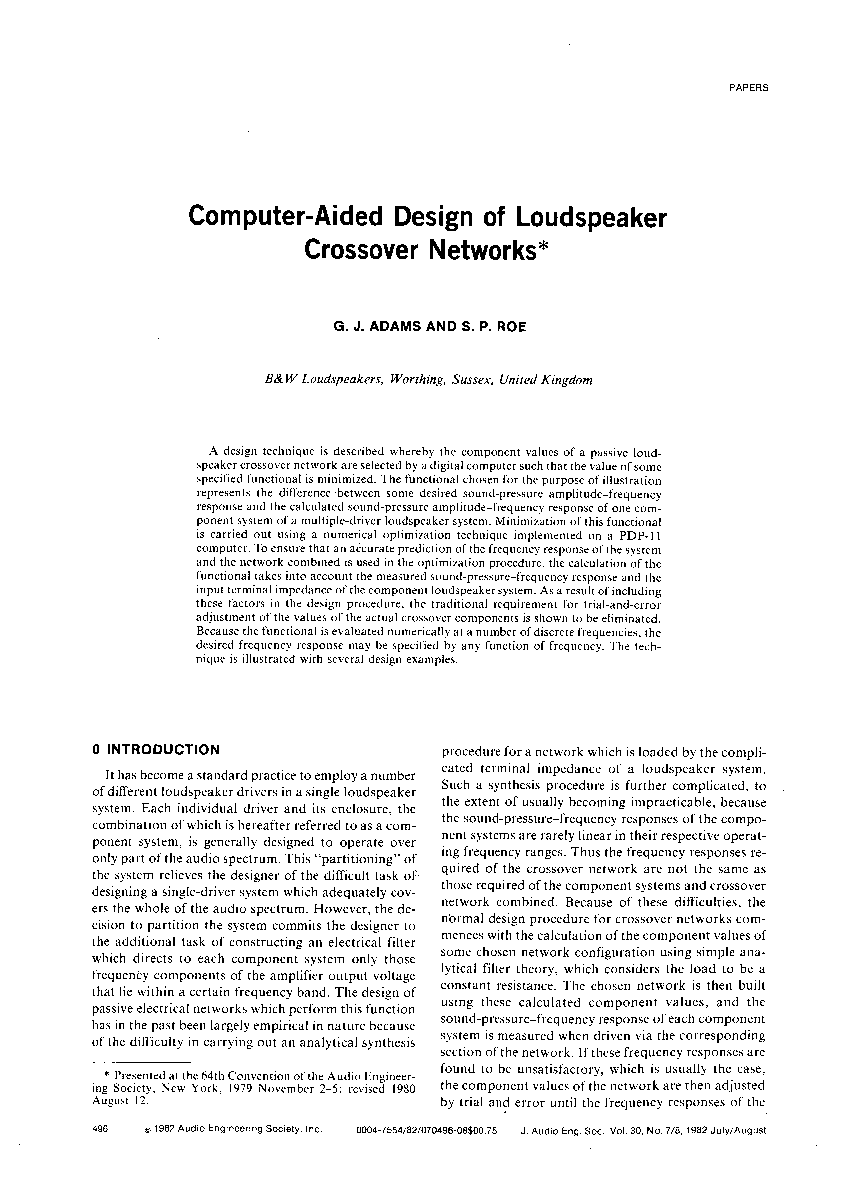Home / Publications / E-library page
You are currently logged in as an
Institutional Subscriber.
If you would like to logout,
please click on the button below.
Home / Publications / E-library page
Only AES members and Institutional Journal Subscribers can download
A design technique is described whereby the component values of a passive loudspeaker crossover network are selected by a digital computer such that the value of some specified function is minimized. The functional chosen for the purpose of illustration represents the difference between some desired sound-pressure amplitude-frequency response and the calculated sound-pressure amplitude-frequency response of one component system of a multiple-driver loudspeaker system. Minimization of this functional is carried out using a numerical optimization technique implemented on a PDP-11 computer. To ensure that an accurate prediction of the frequency response of the system and the network combined is used in the optimization procedure, the calculation of the functional takes into account the measured sound-pressure-frequency response and the input terminal impedance of the component loudspeaker system. As a result of including these factors in the design procedure, the traditional requirement for trial-and-error adjustment of the values of the actual crossover components is shown to be eliminated. Because the functional is evaluated numerically at a number of discrete frequencies, the desired frequency response may be specified by any function of frequency. The technique is illustrated with several design examples.
Author (s): Adams, Glyn J.; Roe, Stephen P.
Affiliation:
B& W Loudspeakers, Worthing, Sussex, United Kingdom
(See document for exact affiliation information.)
Publication Date:
1982-08-06
Import into BibTeX
Permalink: https://aes2.org/publications/elibrary-page/?id=3830
(710KB)
Click to purchase paper as a non-member or login as an AES member. If your company or school subscribes to the E-Library then switch to the institutional version. If you are not an AES member Join the AES. If you need to check your member status, login to the Member Portal.

Adams, Glyn J.; Roe, Stephen P.; 1982; Computer-Aided Design of Loudspeaker Crossover Networks [PDF]; B& W Loudspeakers, Worthing, Sussex, United Kingdom; Paper ; Available from: https://aes2.org/publications/elibrary-page/?id=3830
Adams, Glyn J.; Roe, Stephen P.; Computer-Aided Design of Loudspeaker Crossover Networks [PDF]; B& W Loudspeakers, Worthing, Sussex, United Kingdom; Paper ; 1982 Available: https://aes2.org/publications/elibrary-page/?id=3830